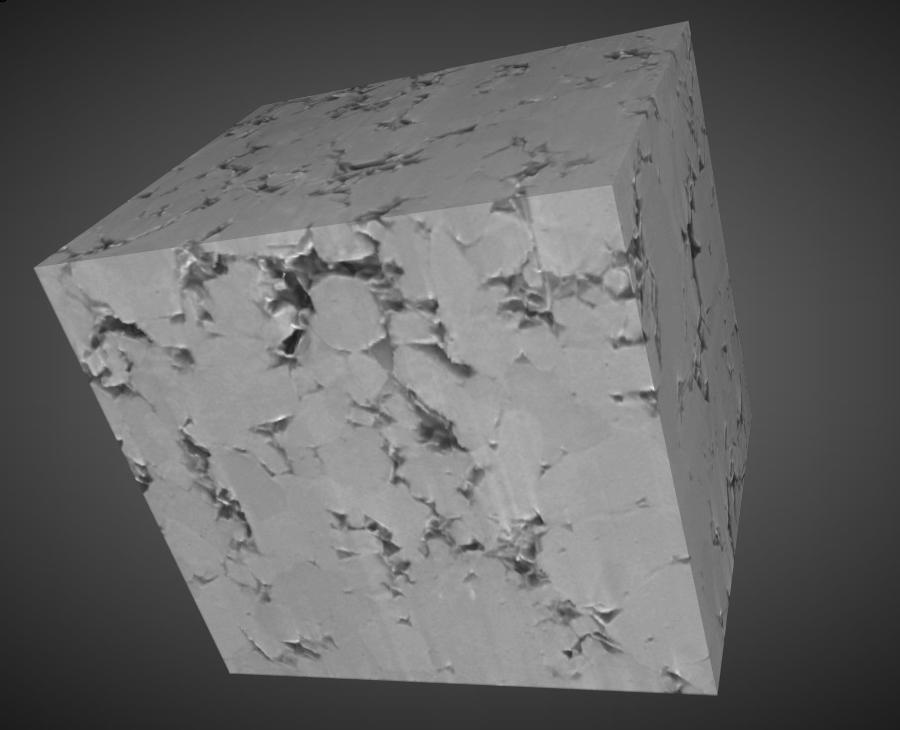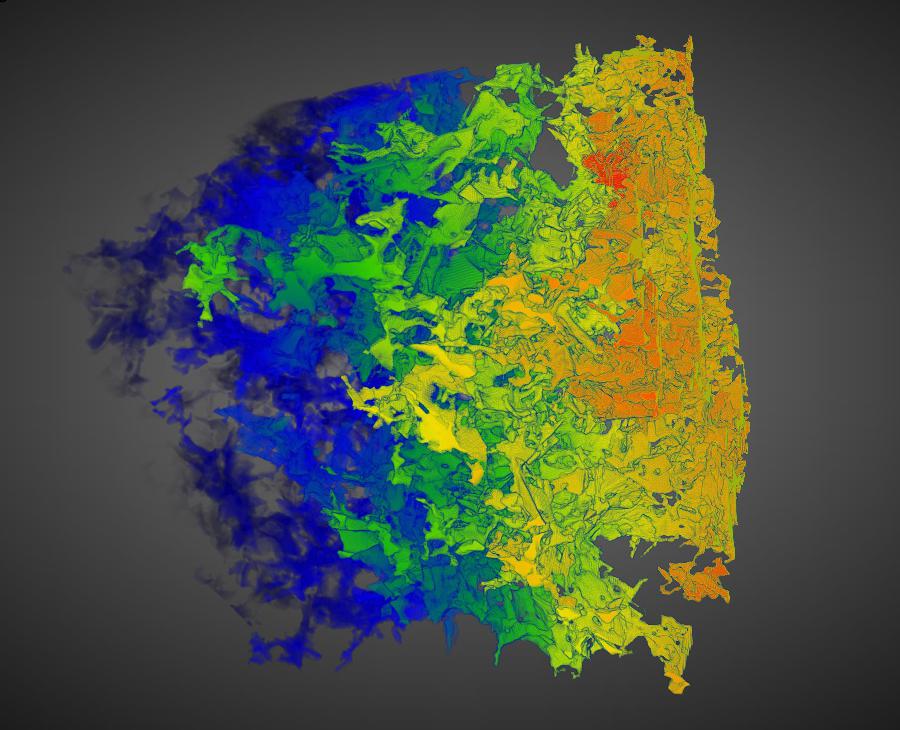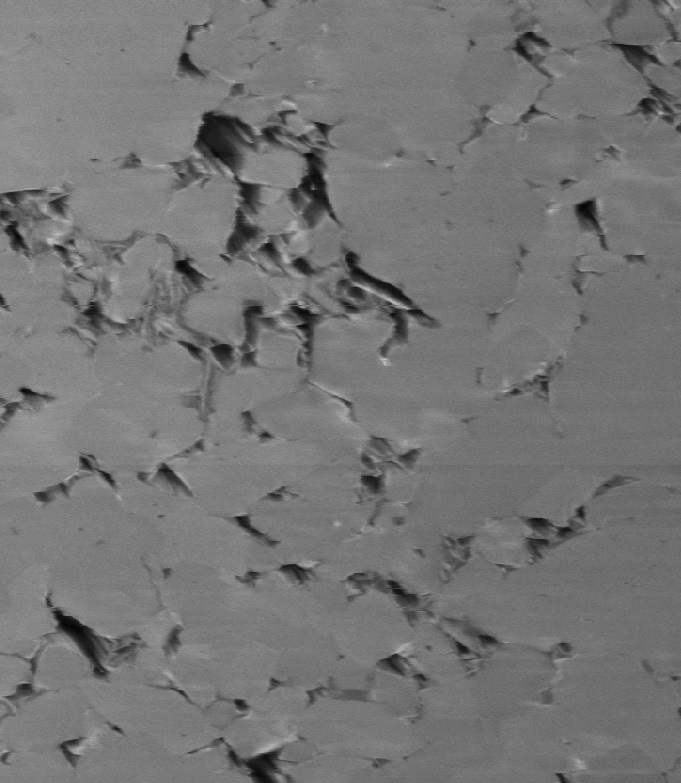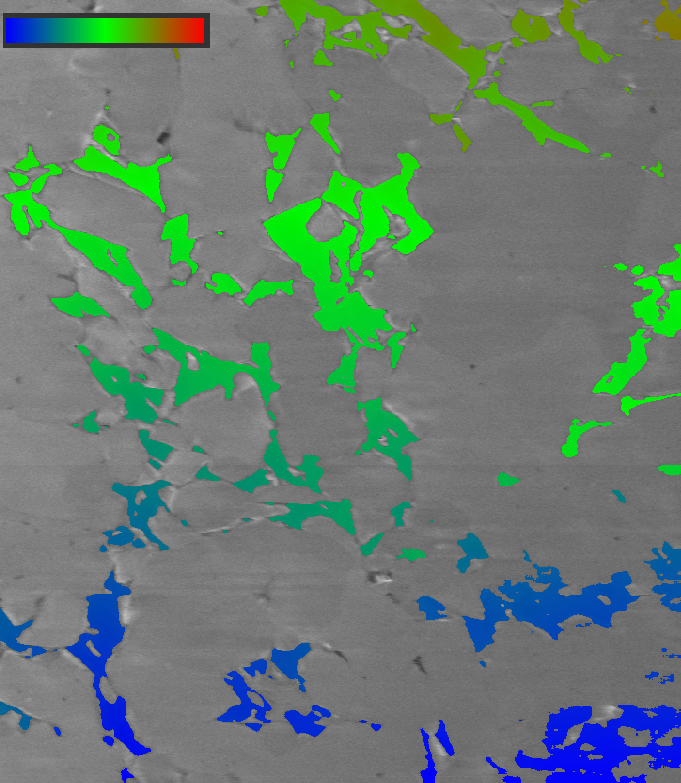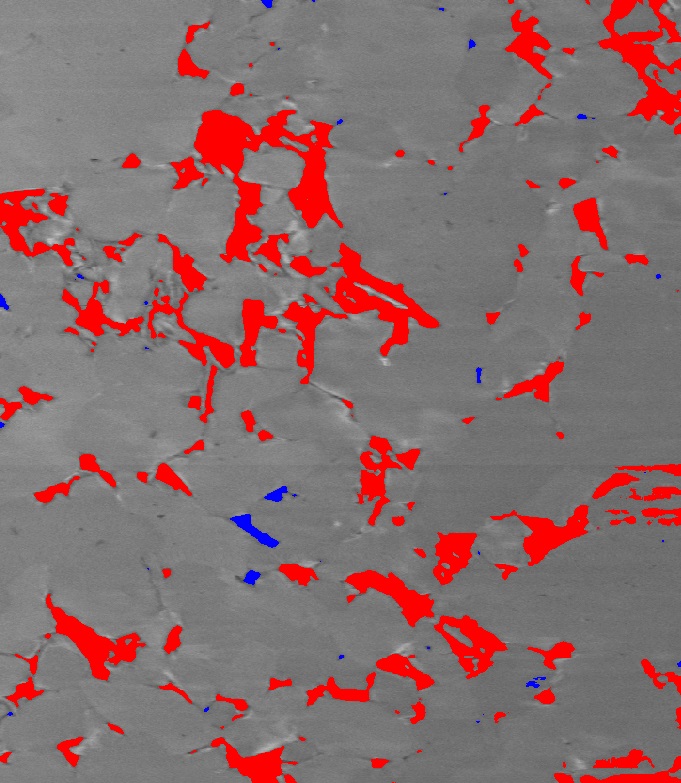3D geodesic propagation and tortuosity of a porosity network
To solve a customer need, Reactiv’IP developed a specific python script based on IPSDK library to compute propagation in the porosity network of a geologic plug acquired by FIB microscopy. This propagation permits to compute the tortuosity.
3D Visual of the propagation map through the plug porosity network.
This system allows to quickly compute the distance map from porosity network within a geologic plug. This is a very common application in Geology. But most of times, the datasets size are massive and the computation time can be prohibitive.
In this application, IPSDK provides the capability to compute very quickly this propagation and the tortuosity. The end-user just needs to specify propagation axis and direction.
In this case Tortuosity = Shortest path / Thickness of the sample = 1.57
Process
First, the Python application segments the volume porosity.
Then, the end-user specifies the propagation axis and direction. Thanks to these parameters, the process creates a new image with seeds placed on a border of the dataset.
Finally, the process uses the IPSDK constraint distance map to compute the propagation inside the network. The application computes the Tortuosity based on the dataset thickness and the shortest path found to go through the dataset.
Here on the rightside : a plug slice with the distance through the porosities in overlay (from the bottom to the top of the sample).

